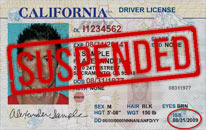
On a California driver’s license, RSTR means “restrictions.” Sometimes, California drivers have RSTR printed on their licenses because the drivers have some kind of restriction on their driving privileges.
Individuals with driving restrictions must follow all of them to avoid legal consequences. So, if anyone ever asks you, “What does ‘restrictions’ mean on driver’s license ID cards in California?” you’ll know that it denotes the driver’s legal driving restrictions.
If you have been charged with or convicted of a DUI, a Los Angeles DUI lawyer can give you a better idea of whether there are restrictions that apply to your license following the charges against you.
What Does RSTR Stand For?
So, what does RSTR mean on a California driver’s license exactly? On California driver’s licenses, RSTR stands for “restrictions.” These restrictions can take many forms, and many drivers already know when such restrictions apply to them.
If you are looking over your California driver’s license and notice an RSTR code listed on your ID, it’s important to know what it means. Violating the rules associated with the restrictions tied to your California driver’s license could result in severe consequences on your end.
What Are Some Common Types of Drivers License Restrictions?
There are many different types of restrictions on California driver’s licenses. Some of the more common types of restrictions could include the following requirements:
- Wear an artificial limb while operating a motor vehicle
- Use corrective lenses while operating a motor vehicle
- Only drive with a hearing aid
- Driving during only daylight hours
- Stop driving after a certain time of day
- Only operate certain types of motor vehicles with mechanical aids
- Submit vision evaluation forms annually
- Only operate motor vehicles with automatic transmissions
- Only operate motor vehicles equipped with both left and right outside rearview mirrors
- Submit medical evaluation forms annually
Additionally, some drivers can only operate specific vehicles, like motorcycles. The Department of Motor Vehicles tracks all driver needs and reports information through restriction codes, which are then printed on driver’s licenses.
Why Does Your License Have Restrictions?
You might have restrictions placed on your California driver’s license for many reasons. Common restrictions in California involve those requiring daytime driving only and mandating that drivers wear bioptic lenses while operating a vehicle.
Now, suppose you require the use of bioptic lenses. In that case, you must pass the California vision exam at the Department of Motor Vehicles with visual acuity greater than 20/200 in at least one of your eyes using a bioptic device or lens.
Another example is provisional licensing restrictions, which often apply to California teenage driver’s licenses. These restrictions may prohibit teen drivers from operating a motor vehicle between 11:00 PM and 5:00 AM or transporting passengers under 20 years of age.
Can You Get a Restricted License After a DUI?
Individuals with previous convictions for driving under the influence (DUI) may be eligible for a restricted license. Restricted licenses give drivers who drove under the influence of alcohol the opportunity to drive when they need to do the following:
- Go to work
- Conduct work-related activities
- Attend religious services
- Attend court-ordered DUI school
- Complete medical appointments
A restricted license may only allow drivers to operate vehicles during specific hours. For example, a restriction might allow drivers to operate their motor vehicles between 8 AM and 6 PM.
If you operate a vehicle outside of one of these times with a restricted license, you could be found in violation of California laws regarding driving with a suspended license, increasing the time you have to wait to get back your unrestricted driving privileges.
Who Qualifies for Restricted Licenses in CA?
Only some people who have a suspended or revoked license will be eligible for a restricted license. In fact, under California Vehicle Code §13352.4, the DMV can only provide restricted driver licenses to individuals who meet the following requirements:
- Proof of financial responsibility
- Proof of enrollment in a DUI program
- Proof of completion of a DUI program
- Payment of reinstatement fees
- Re-issuance and restriction fees
Therefore, before your application for a restricted driver’s license can be approved, you must do the following:
- Provide the California DMV with all necessary documentation
- Pay any required fines
- Show proof that you have enrolled in a DUI program
The court will not count hours completed in a previous DUI program if you completed the program before your current violation. Your enrollment, participation, and completion of a DUI program must all occur within the same violation time frame.
You must also prove that you require a restricted license. Be prepared to continue to provide documentation—including proof of financial responsibility—for a minimum of three years. Failure to do so risks your driving privileges and restricted license status.
Also, do not be surprised if your driving restrictions are limited to the hours you have to work or attend other listed services. You can apply for a restricted license after a DUI with professional help.
What Happens if You Are Not in Compliance With License Restrictions?
If you have restrictions on your California driver’s license and the police catch you engaging in non-compliant behaviors, you could pay serious penalties. You might face infractions or criminal charges associated with failure to adhere to your California driver’s license restrictions.
These are some of the penalties you could be up against:
- A license suspension or lengthened suspension period
- Fines and administrative fees
- Formal or informal probation
- Jail or prison time
- Community service hours
- Attendance at a DUI program
- Completion of a substance abuse treatment program
To avoid these outcomes, you must follow all program requirements if you have a restricted driver’s license.
Can You Get a Restricted License With an IID?
You may get a special restricted license if you install an ignition interlock device (IID) on your vehicle after a conviction for driving under the influence. This license restriction allows you to continue with normal driving activities as long as you abide by the following requirements:
- Install an IID
- Pay a reissue fee
- Enroll in a DUI program
- Provide an SR-22 form
California’s drunk driving laws can have severe effects on your driving privileges, but alcohol education programs and IID installation can increase your chances of still being able to drive.
Contact a Los Angeles DUI Attorney to Understand What RSTR Means on a California Driver’s License
On a California driver’s license, RSTR means you are responsible for abiding by certain legal restrictions while driving. At Los Angeles DUI Lawyer, we can connect you with attorneys who assist those whose licenses have RSTR attached to them.
For example, are you facing accusations of non-compliance with California driver’s license restrictions? Do you need to take steps to secure a hardship license following a DUI conviction?
We can connect you with people who can help.
If you need a strong legal advocate on your side, reach out to us so we can connect you with a law firm that will support you, defend your rights, and seek justice on your behalf. Learn more about us today.







